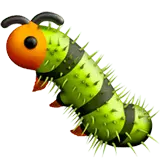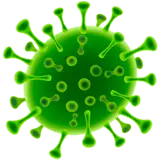Kimberley Queen fern Nephrolepis obliterata



ABOUT
Nephrolepis obliterata typically grows to a height of 2-3 feet and has a spread of 3-4 feet. The fronds can reach a length of 2-3 feet and are arranged in a dense rosette.
About this plant
 Names
NamesFamily
Nephrolepidaceae
Synonyms
Kimberley Queen fern, Australian swordfern, Kimberly Queen, Sword Fern
Common names
Nephrolepis obliterata
 Toxicity
ToxicityTo humans
Nephrolepis obliterata is not toxic to humans. However, ingesting large quantities of the plant may cause stomach upset.
To pets
Nephrolepis obliterata is also non-toxic to cats, dogs, and horses according to the American Society for the Prevention of Cruelty to Animals (ASPCA).
 Characteristics
CharacteristicsLife cycle
Perennials
Foliage type
Evergreen
Color of leaves
Green
Height
Up to 3 feet
Spread
Up to 4 feet
Hardiness zones
8
Native area
Australia
Benefits
 General Benefits
General BenefitsAir purification: Nephrolepis obliterata helps to purify the air by removing harmful pollutants and toxins.
Aesthetics: It is a beautiful plant that can enhance the appearance of any indoor space, adding a touch of natural beauty.
Easy to care for: Nephrolepis obliterata is relatively easy to care for and can thrive in a range of indoor conditions.
Low maintenance: It requires very little maintenance beyond regular watering and occasional pruning.
Durability: This fern is hardy and long-lasting, making it a great investment for any indoor gardener. Medical Properties
Medical PropertiesThere is limited research on the medical properties of Nephrolepis obliterata.
 Air-purifying Qualities
Air-purifying QualitiesKimberley Queen fern is an excellent air-purifying plant. It has been found to be effective in removing harmful indoor air pollutants such as formaldehyde, benzene, and toluene, making it a great choice for improving indoor air quality.
 Other Uses
Other UsesKimberley Queen fern doesn't have many unusual uses beyond its decorative qualities. However, some people have used the fronds of the fern for weaving and basket-making.
Interesting Facts
 Feng Shui
Feng ShuiKimberley Queen fern is believed to bring tranquility and calmness into a space, making it a popular choice in feng shui. It is often placed in areas where one wants to promote a sense of relaxation and balance, such as bedrooms or meditation spaces.
 Zodiac Sign Compitability
Zodiac Sign CompitabilityIn astrology, Kimberley Queen fern does not have a specific zodiac sign compatibility, but it is generally considered to be a good plant for everyone because of its air-purifying qualities and easy care.
 Plant Symbolism
Plant SymbolismSymbolically, ferns are often associated with new beginnings, growth, and resilience, as they are able to regenerate after being cut back or damaged. In particular, Kimberley Queen fern is sometimes said to represent clarity and purification of the mind, as well as a connection to the natural world.
 Water
WaterKimberley Queen fern prefers consistently moist soil and typically requires watering once or twice a week. However, the frequency may depend on environmental conditions such as temperature, humidity, and light.
 Light
LightIt thrives in bright, indirect light, but can tolerate some shade.
 Temperature
TemperatureThe ideal temperature range for Kimberley Queen fern is between 60-75°F (15-24°C). It can tolerate lower temperatures but may suffer from damage if exposed to temperatures below 50°F (10°C).
 Pruning
PruningRemove any yellow or brown fronds to maintain the plant's appearance. Use clean, sharp pruning shears and cut as close to the base of the plant as possible.
 Cleaning
CleaningAs needed
 Soil
SoilKimberley Queen fern prefers a well-draining potting mix that is rich in organic matter. The ideal pH range is between 5.5 and 6.5.
 Repotting
RepottingThe plant should be repotted every two to three years, or when the roots have outgrown the pot.
 Humidity & Misting
Humidity & MistingKimberley Queen fern prefers high levels of humidity between 50% to 80%. If the air is too dry, you can use a humidifier or place the pot on a tray filled with pebbles and water to increase humidity.
 Suitable locations
Suitable locationsIndoor
All year round.
Outdoor
Can only be grown in the right climate. Does not tolerate low temperatures and draughts.
Hardiness zone
9-11 USDA
 Life cycle
Life cycleKimberley Queen fern does not have any significant flowering or harvest periods as it is grown for its foliage. Here are the different stages of life of Nephrolepis obliterata:
Propagation: Nephrolepis obliterata can be propagated by spores or division of the parent plant. Spores can be sown in the spring or summer, while division can be done at any time of the year.
Seedling stage: Nephrolepis obliterata usually takes about 2-4 weeks to germinate from spores. Once the seedling emerges, it will take about 6-8 weeks to grow to a size that can be potted up.
Vegetative growth: After the seedling stage, the plant will continue to grow vegetatively. The growth rate will depend on the plant's growing conditions such as light, temperature, and soil quality.
Maturity: Nephrolepis obliterata can reach maturity after 2-3 years of growth, at which point it will have developed a full, lush foliage.
Reproduction: Nephrolepis obliterata can reproduce through spores, which can be collected from mature fronds, or through division of the parent plant. Propogation
PropogationPropogation time
Spring - early summer
Kimberley Queen fern can be propagated by spores or by dividing the plant. Spores are produced on the underside of the leaves and can be collected and sown in a container with moist soil. The container should be kept in a warm and humid place until the spores germinate and develop into small ferns.
Division is typically done when the plant outgrows its current pot or becomes root-bound. To propagate through division, carefully remove the plant from its container and gently separate the root mass into smaller sections, each with its own crown and roots. Replant the sections in containers with fresh potting soil and keep them moist until they establish new roots.
The best time to propagate Nephrolepis obliterata is in spring or early summer when the plant is actively growing.
 Pests
PestsSpider mite, Thrips, Scale insects, Mealybug
 Diseases
DiseasesRoot Rot, Powdery mildew, Leaf spot, Rust